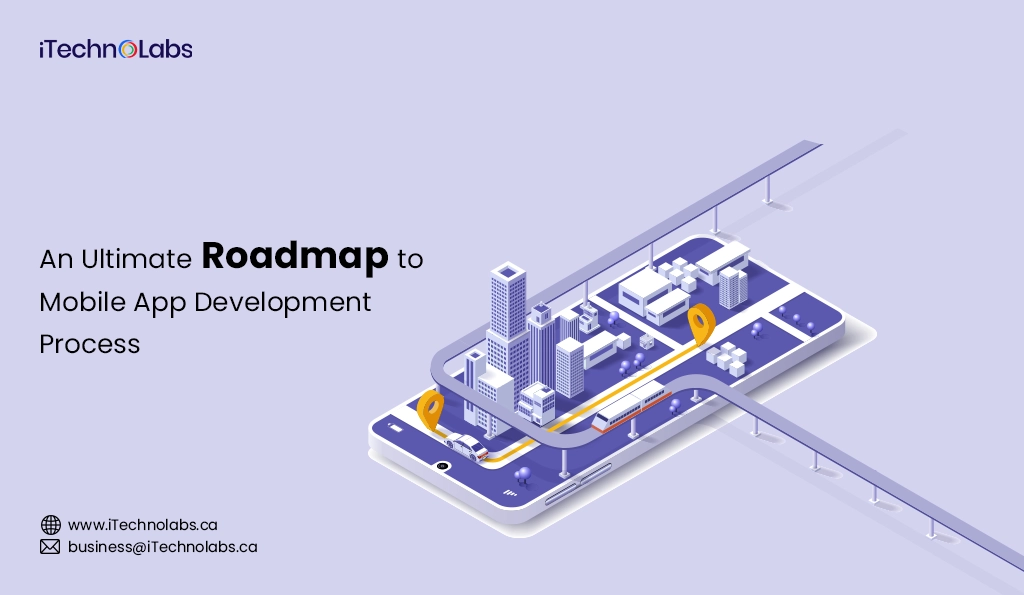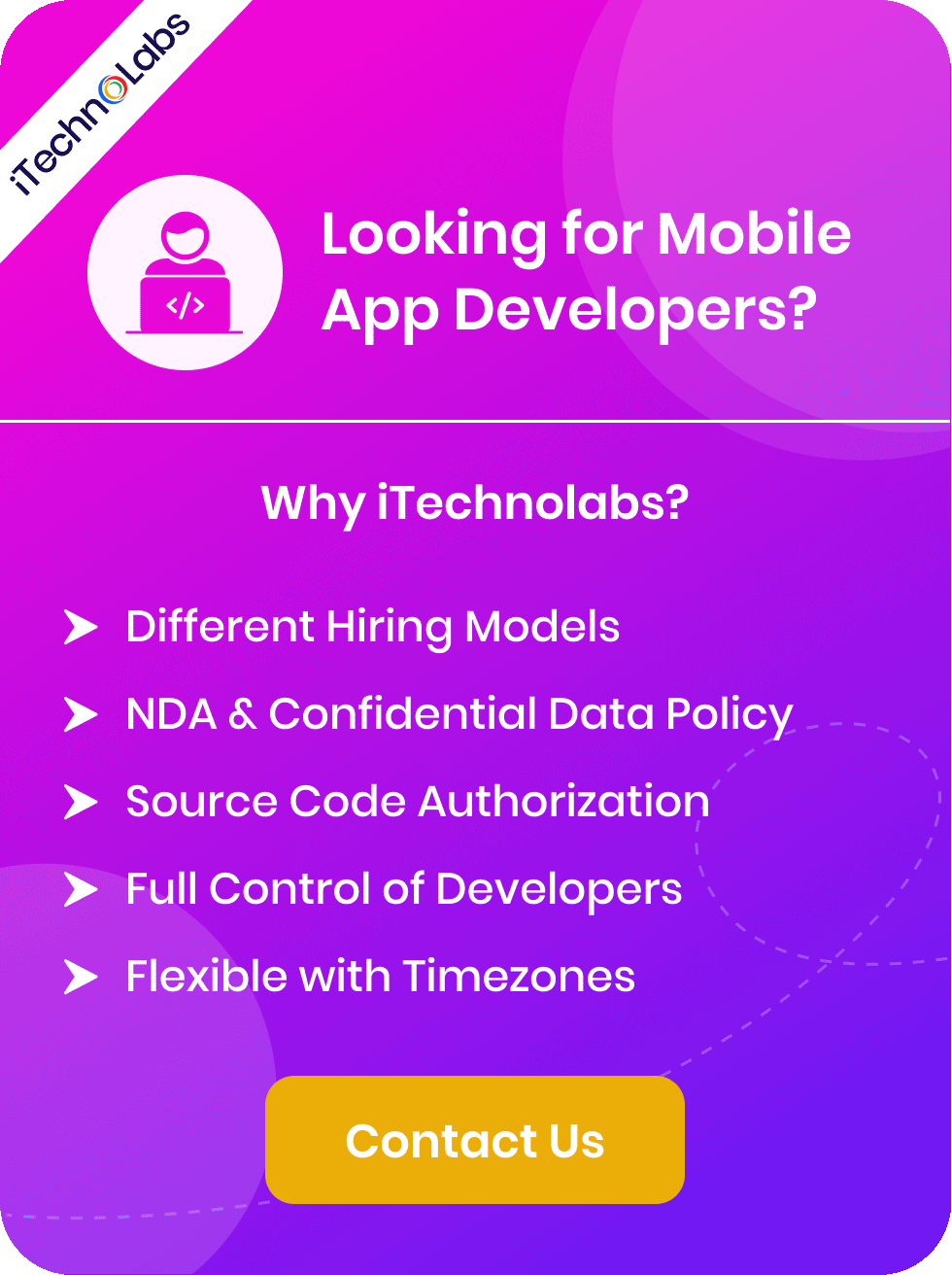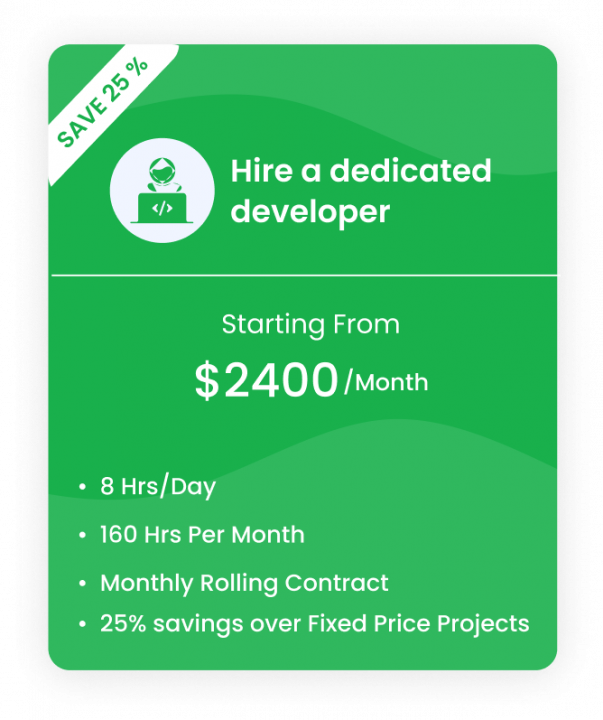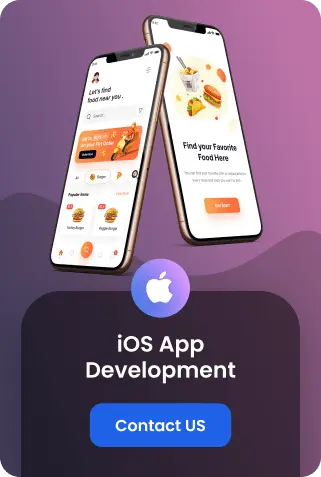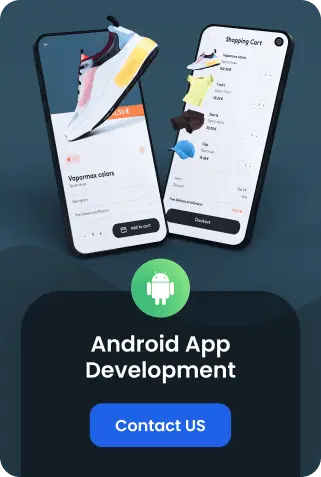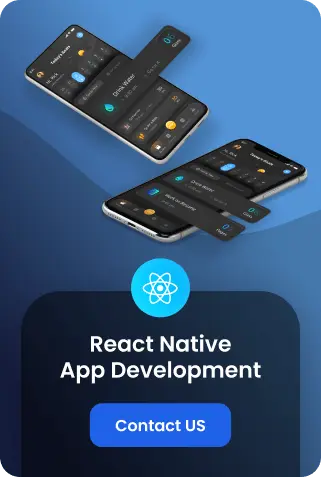The mobile app development process is a complex and continuously evolving journey that requires detailed planning, innovative design, meticulous development, comprehensive testing, and a strategic launch to successfully bring a mobile application to the marketplace. In the current digital era, where the demand for mobile apps has surged dramatically, it’s absolutely critical for businesses to establish a detailed and well-thought-out roadmap before embarking on the development journey. This is essential not just for aligning the development process with the overarching business objectives but also for effectively catering to the needs and expectations of the end-users.
In this extensive guide, we aim to take you step by step through a thorough roadmap for mobile app development, designed to provide you with the essential knowledge and actionable steps needed to create a successful, user-friendly, and market-ready mobile application. From the initial stages of identifying the core concept and defining the target audience to navigating the intricacies of development, testing phases, and finally, a market introduction, our goal is to furnish you with in-depth insights and practical advice. This will aid in developing an application that not only meets but exceeds user expectations, ensuring your offering stands out in the highly competitive digital marketplace.
Moreover, we will delve into the importance of staying abreast of the latest technological advancements and user trends, which can significantly influence the features and functionalities of your application. Understanding the competitive landscape and identifying unique value propositions are also crucial steps in this journey. By examining successful case studies and learning from common pitfalls encountered by others in the industry, you can refine your approach and enhance the overall quality of your mobile application. Our comprehensive guide is designed to be your go-to resource, equipping you with the tools, insights, and best practices to navigate the mobile app development process with confidence and strategic acumen.
Mobile App Development Statistics You Need to Know
Before diving into the intricate and dynamic realm of mobile app development, it’s essential to first arm oneself with a deep and thorough understanding of the current market trends and statistical insights that dominate this field. This initial step is not just important—it’s absolutely crucial. It provides you with a lens through which you can view the actual demand for mobile applications, equipping you with the necessary insights to navigate the complex development process with greater ease and effectiveness.
Taking the time to analyze these trends and statistics in detail allows you to pinpoint potential opportunities that the market presents, as well as identify any challenges that might arise during the development phase. This knowledge enables you to tailor your development strategies to meet the specific needs and preferences of your target audience, ensuring that your application is not just another addition to the app stores, but a valuable tool that meets a real need.
Furthermore, by making well-informed decisions at every stage of your project, based on solid data and trend analysis, you increase the likelihood of your mobile application achieving success. It allows you to anticipate market shifts, adapt to user feedback, and iterate on your product in a way that keeps it relevant and appealing to users.
Top 4 Approaches to Mobile App Development
When it comes to mobile app development, there are countless approaches and methodologies that developers can adopt. However, these can generally be classified into four main categories: native, hybrid, cross-platform, and progressive web apps (PWA). Each has its own set of advantages and disadvantages, making it crucial for app developers to understand which approach best suits their project.
Native App Development
Native app development is the intricate process of designing and creating software applications that are precisely tailored for specific platforms, such as iOS for Apple devices, including iPhones and iPads, or Android for a variety of manufacturers like Samsung, Google, and others. This unique approach necessitates developers to deeply engage with the native programming languages and development tools exclusively provided by the platform’s originators—namely, Swift or Objective-C for iOS, and Java or Kotlin for Android systems.
By leveraging these native resources to their fullest potential, developers are empowered to craft applications that boast of high performance and offer a seamless user experience, meticulously designed to feel like an integral part of the device’s ecosystem. Unlike generic, one-size-fits-all solutions, this specialized method of development enables apps to effectively harness the full capabilities of the device’s hardware and software. This leads to the creation of faster, more responsive applications that can fully access and utilize the platform’s most current features and capabilities, from advanced graphics and processing power to device-specific functionalities like cameras, microphones, and accelerometers.
Hybrid App Development
Hybrid app development, on the other hand, is an approach that combines elements of both native and web applications. It allows developers to create a single codebase that can be deployed across multiple platforms without significant modifications. This is achieved by using web technologies such as HTML, CSS, and JavaScript to develop mobile applications that are then wrapped in a native container.
One major advantage of hybrid app development is its ability to save time and resources, as the same codebase can be used for both iOS and Android platforms. This also allows for easier maintenance and updates, as changes can be made once and applied to all versions of the app.
However, one drawback of hybrid apps is that they may not offer the same level of performance or user experience as native apps. This is because hybrid apps are essentially web-based, and they may not fully utilize the hardware and software capabilities of a specific platform.
Cross-Platform App Development
Cross-platform app development is a method that allows developers to create mobile applications that can run on multiple operating systems, such as iOS and Android. Similar to hybrid apps, cross-platform apps also use web technologies to develop a single codebase.
The main difference between hybrid app development and cross-platform app development is the use of native components. While hybrid apps are wrapped in a native container, cross-platform apps use native components to create a more native-like user experience.
Cross-platform app development offers the advantage of significantly reducing development time and cost, as well as providing a consistent user experience across different platforms. However, similar to hybrid apps, cross-platform apps may also have limitations in terms of performance and access to platform-specific features.
Progressive Web App Development
Progressive web apps (PWA) have gained popularity in recent years as a new approach to app development. PWAs combine the best of both worlds by using web technologies to create an app-like experience that can be accessed through a browser.
PWAs offer many benefits, such as being accessible from any device with a browser, requiring no installation or updates, and providing faster loading times. They also have the ability to work offline and can be saved to the device’s home screen for easy access.
However, one of the main limitations of PWAs is their reliance on modern web technologies, which may not be supported by older devices or browsers. Additionally, they may not offer the same level of performance as a native app.
Also Read: Brief Guide on Grocery Delivery App Development in 2024
Mobile App Development Process Steps
Now that we have discussed the different types of mobile app development, let’s take a look at the general process for developing a mobile app.
Pre-Scoping
Before diving into the development phase, it’s crucial to clearly define the goals and scope of your app. This preparatory step involves conducting thorough research to identify your target audience, understanding their specific needs and preferences, and analyzing the market to recognize any potential competitors. By doing so, you not only sharpen your app’s focus but also tailor its features and functionalities to meet the demands of your intended users, setting a solid foundation for your project’s success.
NDA & App Idea Protection
Once you’ve meticulously defined the scope of your app and identified your target audience, safeguarding your intellectual property becomes a crucial next step. To accomplish this, it’s vital to secure a Non-Disclosure Agreement (NDA) with all partners or developers who will be collaborating on your project. An NDA is a legal contract that ensures the confidentiality of your app idea, prohibiting those involved from disclosing any information to third parties. This protective measure is essential not only for preventing potential leaks of your innovative concept but also for protecting against the misuse of the information. By implementing such an agreement, you create a secure environment that fosters trust and collaboration, while ensuring that your intellectual property rights are well-protected.
Scoping
With your innovative app idea securely protected through the necessary intellectual property measures and the project’s scope meticulously defined, the next crucial step beckons: embarking on the journey to outline the technical requirements for your app. This intricate phase is all about diving deep into the defining elements of your app—its core features and functionalities that will set it apart in a crowded market. This includes its user interface design, which should be intuitive and engaging; the choice of development platform, which will determine the app’s accessibility across different devices; and the technology stack, which underpins the app’s performance and scalability.
Moreover, this phase demands a thorough assessment of potential integrations with external systems or hardware. These integrations are often essential for enhancing the app’s functionality, offering users a seamless experience by connecting with other services they use or integrating with devices that enrich the app’s utility.
Agile Sprint Planning
Once you have a clear understanding of the defining elements for your app, it’s time to shift focus to mapping out a development plan. This is where Agile Sprint Planning comes into play, a project management approach that emphasizes adaptability and collaboration throughout the development process.
Agile Sprint Planning involves breaking down the development cycle into smaller iterations or sprints, with specific tasks assigned to each sprint. This allows for continuous feedback and adjustments, ensuring that the app is developed efficiently and meets user expectations.
One of the key benefits of Agile Sprint Planning is its focus on delivering a Minimum Viable Product (MVP) in each sprint. An MVP is a basic version of the app with essential features that can be released to gather feedback from early users. This allows for early validation and adjustments to be made before investing more time and resources into developing features that may not align with user needs.
Design Sprint
One of the first steps in Agile Sprint Planning is the Design Sprint. This involves a collaborative brainstorming session to determine the overall design and layout of the app. It gives stakeholders an opportunity to provide input on user interface (UI) and user experience (UX), ensuring that the app meets their expectations.
Development Sprint
After the design has been determined, the development sprint begins. This involves breaking down the app’s features into smaller tasks and assigning them to team members. The focus is on developing a functional MVP that can be released for feedback.
Testing Sprint
Once the MVP has been developed, it is important to conduct thorough testing before releasing it to users. This includes functional and user acceptance testing to ensure that the app meets all requirements and functions as expected.
MVP Release and Feedback
Once the Minimum Viable Product (MVP) has been meticulously tested and earned the necessary approval, it is officially launched and strategically released to a carefully selected group of early users. This purposeful dissemination allows for the collection of valuable insights and feedback from those who are most likely to benefit from and use the product in real-world scenarios. This critical step is essential as it empowers the development team to pinpoint and carry out any necessary adjustments or enhancements, ensuring the product’s functionality and user experience are optimized before moving forward to the next phase of development. Additionally, the feedback garnered from these initial adopters is instrumental in guiding the development team. It plays a pivotal role in helping to prioritize and shape the features and enhancements that will be the focus of future development sprints. By doing so, it ensures that the product not only meets but exceeds user expectations, evolving continuously in alignment with user needs and preferences. This iterative process of testing, feedback collection, and refinement is crucial for the product’s success, allowing it to adapt and improve continuously as it progresses through subsequent development sprints.
Agile Again
After the initial release of the Minimum Viable Product (MVP) and the subsequent phase of gathering feedback, it is crucial for the development team to seamlessly transition back to an Agile methodology. Armed with valuable insights and direct input from users, the team is now in a prime position to efficiently prioritize upcoming tasks, carefully plan future iterations, and adapt swiftly and strategically to any necessary changes. This dynamic approach is not a one-time effort but continues throughout the entire lifecycle of the product. Each iteration builds upon the foundations laid by its predecessors, systematically incorporating new features and enhancements. These updates are directly influenced by user feedback, ensuring that the development process is finely tuned to meet actual user needs and preferences.
By embracing this ongoing agile approach, the product is kept perpetually relevant and competitive in a rapidly evolving market. This strategy not only ensures that the product aligns with the current demands of its users but also anticipates future needs, thereby staying several steps ahead of competitors. The agile methodology fosters a culture of continuous improvement, encouraging the team to iterate, learn, and grow. This process, in turn, guarantees that the product not only meets but exceeds user expectations, securing its place in the market and building a loyal user base.
Testing and Quality Assurance
One crucial aspect of Agile development is rigorous testing and quality assurance. As each iteration builds upon the previous one, it is imperative to ensure that all updates and new features function seamlessly with existing components. This involves a comprehensive testing process, including unit testing, integration testing, and user acceptance testing. These tests not only identify any potential bugs or errors but also validate the functionality and usability of the product.
In addition to testing, continuous quality assurance is integrated throughout the development process. This involves regular code reviews, automated testing, and frequent feedback from users. By constantly monitoring and evaluating the product’s quality, any issues can be identified and addressed promptly, minimizing their impact on the overall development process.
App Launch and Post-Launch Support
Once the development process is complete, the next step is launching the app. In an agile environment, this launch is not a one-time event but rather an ongoing process. By releasing frequent updates and new features, the app can continue to evolve and adapt to changing user needs.
In addition to launching the initial version of the app, the agile methodology also emphasizes the importance of post-launch support. This means providing ongoing maintenance and support to address any issues that may arise after the app is released. It also involves gathering feedback from users and incorporating it into future updates to continuously improve the product.
Post-App Launch Maintenance and Updates
Agile methodology emphasizes the need for continuous improvement even after the app has been launched. This involves regularly reviewing and updating the product based on user feedback, market trends, and technological advancements.
To ensure a successful post-launch maintenance process, it is crucial to have a dedicated team in place to handle updates and bug fixes. This team should also be responsible for monitoring user feedback and incorporating it into future updates. By consistently improving the app, it can stay competitive in the market and retain a loyal user base.
Read More: Top 10 Flutter App Development Trends to Know in 2024
Key Considerations to Make While Going for Mobile App Development
While agile methodology offers a flexible and efficient approach to mobile app development, there are still some key considerations to keep in mind before embarking on this process.
Define Your Goals and Purpose
Before diving into the app development process, it’s absolutely essential to lay out your objectives and the core purpose behind the app’s creation in clear, unambiguous terms. This initial step is more than just preparatory; it serves as a guiding light for the entire development team, ensuring that every effort is in sync with your vision and that the final product not only meets but exceeds your expectations and achieves its designated function. By establishing these goals from the outset, you pave the way for a development process that is not only more streamlined and focused but also more effective in utilizing resources efficiently. This strategic planning is key to avoiding common pitfalls and ensures that every step taken is a step towards creating an application that is not just functional, but truly impactful and successful in its mission. Taking the time to define these objectives clearly can significantly influence the development journey, making it smoother and more aligned with your ultimate goals, leading to a product that resonates with users and fulfills its intended purpose more effectively.
Choice of Platform and Technology
Another vital consideration is the selection of the right platform for your app. While iOS and Android platforms are the most commonly used, it’s crucial to consider which platform aligns better with your target audience, business goals, and budget before making a decision. Each platform has its own set of advantages and limitations, so it’s important to thoroughly research and evaluate which one suits your needs best. Additionally, choosing the right technology stack can greatly impact the success of your application. Factors such as scalability, security, and future updates must be taken into account when selecting the appropriate technology for your app. It’s essential to keep abreast of current trends and developments in the tech industry to ensure that you are utilizing the most efficient and effective tools for your project.
Design & Development Approach
Design and development are two crucial elements that go hand in hand when creating an app. A well-designed user interface (UI) and user experience (UX) can make all the difference in providing a seamless, engaging, and intuitive experience for users. It is essential to consider factors such as accessibility, intuitiveness, and responsiveness while designing an app. Moreover, choosing the right development approach can greatly impact the success and efficiency of your project. Whether you opt for a native app, hybrid app, or cross-platform development, each approach has its own set of pros and cons. It’s important to carefully evaluate which approach best suits your project and aligns with your goals and budget. Additionally, continuous testing and iteration are crucial in ensuring that the final product meets the desired standards and user expectations.
Choice of Technology Stack
Selecting the appropriate technology stack is a critical decision that can have a significant impact on the success of your app. It involves selecting the right programming language, frameworks, libraries, and tools to develop your application. The choice of technology stack should be based on various factors such as project requirements, scalability, security, and cost-effectiveness. With new technologies emerging constantly, it is important to stay updated and choose a stack that will not only meet your current needs but also have the potential to adapt and evolve in the future. Additionally, it’s essential to ensure compatibility with different devices and platforms to provide a seamless experience for all users.
Consider Strong Security Measures
Ensuring the security of your app and protecting user data should be a top priority. With cyber threats on the rise, it has become more critical than ever to incorporate strong security measures during the development process. This includes implementing secure coding practices, regularly updating software and patches, and conducting thorough security testing before launching the app. It’s also essential to have proper protocols in place for handling sensitive user information and addressing any security breaches that may occur. By prioritizing security from the start, you can prevent potential data breaches and build trust with your users.
Adherence to Regulatory Compliances
Depending on the nature of your app, it may be subject to certain regulations and compliances such as GDPR, HIPAA, or PCI DSS. It’s important to understand these regulations and ensure that your app is compliant with all necessary guidelines. Failure to comply can result in severe penalties and damage to your reputation. Therefore, it’s crucial to have a thorough understanding of the regulatory landscape and incorporate necessary measures during the development process to ensure compliance. This will not only protect your app but also establish trust with your users by showing that you take their privacy and security seriously.
Determine Monetization Strategy
As an app developer, it’s essential to have a clear understanding of how you plan to monetize your app. There are various strategies for generating revenue such as in-app purchases, subscription models, and advertising. It’s important to consider the nature of your app and its target audience when deciding on a monetization strategy. Additionally, you should also research industry trends and analyze your competition to determine the most effective approach. Keep in mind that your monetization strategy may evolve over time, so it’s important to continually evaluate and adjust accordingly.
How much does it cost to build a custom mobile application?
The cost of developing a custom mobile application can vary widely based on a range of factors including the app’s complexity, platform (iOS, Android, or both), design specifics, and the developer’s hourly rates. For basic apps with minimal features, development costs can start from as low as $10,000 to $50,000. Mid-level apps with more complex functionalities and integration might range between $50,000 and $150,000. Meanwhile, highly complex applications, such as those requiring advanced technologies like augmented reality, artificial intelligence, or extensive database integration, can exceed $150,000 and can go as high as $500,000 or more. Remember, these are ballpark figures and the actual costs can vary greatly depending on your specific requirements and the development team you choose to work with.
The cost associated with developing a custom mobile application can be broadly categorized into various segments based on development stages and functionalities:
- Basic Apps ($10,000 – $50,000): These applications feature minimal functionalities and are designed with a simple UI/UX, lacking any backend development. They are ideal for small businesses or startups aiming to establish an initial mobile presence without a significant investment. This price range covers basic apps that could include simple interaction forms, basic content delivery systems, and standard design templates.
- Mid-Level Apps ($50,000 – $150,000): Apps in this category offer more complex functionalities and are designed with custom user interfaces, incorporating features like payment integration, API connections, and moderate backend services to support more extensive user interaction. Suitable for businesses looking to offer more comprehensive services through their app, including e-commerce capabilities, social networking elements, or more personalized user experiences.
- High-End Apps ($150,000 – $500,000+): High-end applications require substantial investment due to their use of advanced technologies such as Augmented Reality (AR), Artificial Intelligence (AI), Machine Learning (ML), or extensive database management and security features. These apps are targeting larger enterprises or businesses at the forefront of technology, looking to push the boundaries of what mobile applications can achieve. This range includes applications that not only offer unique services but also require significant backend architecture to manage vast amounts of data, provide real-time updates, and ensure high levels of user engagement and personalization.
Suggested: How Much Does it Cost to Create An App
How can iTechnolabs help you to build custom mobile applications?
iTechnolabs stands out as a premier mobile app development company, expertly specializing in the creation of custom mobile applications designed to meet your precise business requirements. With a dedicated team of experienced developers, innovative designers, and meticulous project managers, we engage in a collaborative process with you to thoroughly comprehend your objectives. Our goal is to craft an application that not only aligns with your vision but also enhances your business operations, ensuring it resonates with your target audience. Through leveraging the latest technologies and following industry best practices, we are committed to delivering high-quality, scalable, and user-friendly mobile solutions that help drive your business forward.
Here’s how iTechnolabs can help you build a custom mobile application:
- Consultation and Strategy: Our team will work with you to understand your business goals, target audience, and unique requirements for the application. We will provide expert advice on the best technologies, features, and design elements to incorporate into your app.
- Custom Design and Development: Using the latest tools and technologies, we will create a visually appealing and functional mobile application that meets your specifications. Our developers have expertise in creating custom solutions for different platforms such as iOS, and Android, and cross-platform development.
- Security and Data Management: We understand the importance of data security and privacy for your business. That’s why we implement robust security measures to protect sensitive user information and ensure compliance with industry standards.
- Integration with Third-Party Systems: If your app requires integration with external systems such as payment gateways, social media platforms, or analytics tools, our team can handle it seamlessly.
- Testing and Quality Assurance: We conduct rigorous testing to ensure that your app is bug-free and performs flawlessly on different devices and operating systems.
- Ongoing Support and Maintenance: Our services don’t end with the development of your app. We offer ongoing support and maintenance to ensure that your app continues to function smoothly and stays up-to-date with the latest features and security updates.
- Continuous Improvement: We believe in constantly improving our processes and technologies to deliver the best results for our clients. We will work closely with you to gather feedback and make any necessary improvements or updates to your app.
Are you looking for a mobile app development company?
Choosing iTechnolabs for your custom mobile application development offers several compelling advantages. First, our bespoke approach to design and development means that your app will be uniquely tailored to meet your business needs and customer expectations. With our custom solutions, you’re not getting a one-size-fits-all product but one that stands out in the crowded app marketplace. Our expertise in integrating third-party systems enhances the functionality of your app, making it more versatile and user-friendly. The rigorous testing and quality assurance phase guarantees an optimal user experience, minimizing glitches and improving app reliability. Furthermore, our commitment to ongoing support and maintenance ensures that your app remains relevant and operational, adapting to technological advancements and changing user demands. Lastly, our continuous improvement policy signifies that we are always looking for ways to make your app better, providing you with a competitive edge and maximizing your return on investment.
- Tailored Solutions: iTechnolabs excels in the development of custom mobile applications that are meticulously crafted to align with the specific needs of your business. By focusing on your operational requirements and customer expectations, we ensure that each solution is a perfect fit, tailored just for you. Our approach involves a deep understanding of your business objectives, enabling us to create applications that not only meet but exceed your expectations.
- Expertise in Integration: Our team possesses extensive expertise in the seamless integration of third-party systems and APIs into your mobile app, significantly enhancing its functionality. This integration makes your app much more powerful and user-friendly, providing your customers with a seamless experience. By leveraging our integration capabilities, your app will stand out in the marketplace, offering features and functionalities that are both innovative and practical.
- Quality Assurance: At iTechnolabs, quality assurance is not just a phase; it’s a comprehensive process integrated into every step of our development cycle. We conduct thorough testing and QA to ensure that the final product is free from glitches and delivers a superior user experience. Our focus on creating reliable, high-quality applications means that your customers enjoy a smooth, uninterrupted experience, fostering trust and satisfaction.
- Ongoing Support: Our commitment to your success extends far beyond the initial launch. We provide continuous post-launch support and maintenance to ensure that your app remains relevant in the face of rapidly evolving technological advancements and security threats. By keeping your app updated with the latest features and protections, we guarantee its long-term viability and continued engagement with your audience.
- Continuous Improvement: iTechnolabs adopts a proactive stance towards feedback and market trends, enabling continuous refinement of our processes and your app. We are dedicated to responding to user feedback and changing market demands promptly, ensuring that your application remains competitive and meets the needs of your customers. This commitment to continuous improvement is fundamental to our philosophy, driving the ongoing success and innovation of your mobile application.
Important: How Much Does It Cost to Build a Platform Like Moviesjoy?
Conclusion:
In conclusion, at iTechnolabs, we are dedicated to creating innovative and practical mobile applications that stand out in the marketplace. Our comprehensive approach to quality assurance, ongoing support, and continuous improvement ensures that your app not only meets but exceeds customer expectations. By partnering with us, you can be confident in the long-term success and viability of your mobile application. Contact us today to learn more about our services and how we can help bring your app ideas to life. By consistently delivering reliable, high-quality applications, we aim to build trust with both our clients and their customers.
FAQs
What are the key stages of the app development process?
The app development process comprises several crucial stages, each playing a pivotal role in turning an initial idea into a fully functional application. These stages are:
- Ideation: This is the brainstorming phase, where concepts and ideas are generated. It’s about identifying a gap in the market or a specific need that the app can address.
- Design: In this stage, the visual and user experience aspects of the app are planned out. It involves creating wireframes and prototypes to establish the app’s layout, features, and usability.
- Development: Here, the actual coding of the app takes place. Developers work to bring the designs to life, coding the front-end (user interface) and back-end (server-side) of the app.
- Testing: Before an app can be launched, it must undergo rigorous testing to identify and fix any bugs or issues. This ensures the app is stable, functional, and ready for public use.
- Launch: The app is released on platforms like the Apple App Store or Google Play Store. This phase includes marketing and promotional efforts to attract users.
- Ongoing Maintenance and Support: After launch, the app requires continuous updates and maintenance to fix any emerging issues, add new features, and improve user experience based on feedback.
How do I choose the right mobile app development company for my project?
When selecting a mobile app development company, it’s imperative to evaluate several crucial factors to ensure your project’s success. These include the company’s expertise in the specific technology or platform you’re interested in, their years of experience in the field, and a diverse portfolio showcasing their previous work. Reviewing their past projects can give you insight into their creativity, technical proficiency, and the types of solutions they’re capable of delivering.
Cost is another significant consideration, but it’s important to balance affordability with quality. Opting for the cheapest option may not always yield the best results, so it’s wise to look for competitive pricing that aligns with industry standards.
Effective communication is paramount throughout the development process. Ensure the company employs clear, timely, and open communication channels. This is crucial for discussing project updates, iterations, and any changes that might arise.
What is the cost of developing a mobile app?
The cost of developing a mobile app can vary greatly depending on various factors, such as the complexity of the app, the platform it’s being developed for, and the features and functionalities required. Generally, a basic app with standard features can cost anywhere between $10,000 to $50,000. However, more complex apps with advanced features and custom design can cost upwards of $100,000.
It’s important to consider the long-term costs as well, such as maintenance and updates. Depending on the complexity of your app, you may also need to budget for ongoing support and bug fixes. It’s essential to discuss all potential costs with the development company before starting the project to avoid any surprises down the line.
How long does it take to build a mobile app?
The time it takes to build a mobile app can vary significantly depending on the complexity and scope of the project. Generally, a simple app with standard features can take anywhere from three to six months to complete. More complex apps with advanced functionalities may take up to a year or more.
It’s essential to have clear communication and expectations regarding timelines with the development company. This will help ensure that the project is completed within a reasonable timeframe and that any delays or setbacks are addressed promptly. Additionally, building buffer time for unexpected issues can help avoid any major delays in the development process. Overall, being realistic about timelines can help manage expectations and prevent any unnecessary stress during the app development process.
